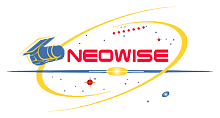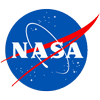
 |
The Near-Earth Object Wide-field Infrared Survey Explorer at IPAC |
The NEOWISE 2017 Data Release makes available the 3.4 and 4.6 μm (W1 and W2) Single-exposure images and extracted source information that were acquired between December 13, 2015 and December 13, 2016 UTC, the third year of survey operations of the Near-Earth Object Wide-field Infrared Survey Explorer Reactivation Mission (NEOWISE; Mainzer et al. 2014, ApJ, 792, 30). The third year NEOWISE data products are concatenated with those from the first two years (originally released on March 26, 2015 and March 23, 2016) into a single archive so that all data can be queried easily at one time.
NEOWISE scanned the sky nearly six complete times during the first three years of survey operations, with six months separating survey passes. With twelve or more independent exposures made on each point on the sky during each survey epoch, the NEOWISE archive is a time-domain resource for extracting multiple thermal flux and position measurements of solar system small bodies, as well as background stars and galaxies.
The combined NEOWISE Data Release products from the first three years of survey operations include:
NEOWISE utilizes the Wide-Field Infrared Explorer (WISE; Wright et al. 2010, AJ, 140, 1868) spacecraft that surveyed the entire sky in 2010 with a cryogenically cooled 40 cm telescope and four 1kx1k mid-infrared array detectors operating at 3.4, 4.6, 12 and 22 μm. WISE continued to survey for four months following the exhaustion of its solid hydrogen cryogen in September 2010 using its two short wavelength bands. After completing a survey of the inner main asteroid belt and a second coverage of the sky, WISE was placed into hibernation in February 2011.
The WISE spacecraft was brought out of hibernation in September 2013 and renamed NEOWISE with a mission to detect and characterize asteroids and comets, and to learn more about the population of near-Earth objects that could pose an impact hazard to the Earth. The spacecraft was returned to zenith pointing which enabled the telescope and focal plane to passively cool down to approximately 73 K. Survey operations were resumed on December 13, 2013 UTC with the W1 and W2 detectors operating at sensitivities near those of the original cryogenic survey. The first solar system moving object tracklet candidates were reported to the IAU Minor Planet Center on December 26, and tracklet deliveries continue to be made three times per week. As of May 2017, NEOWISE has made over 500,000 infrared measurements of approximately 26,000 different solar system objects.
The NEOWISE Reactivation Mission is funded by the NASA Planetary Science Division. Planetary science research using NEOWISE data is eligible for proposals to the NASA ROSES Solar System Workings and Planetary Data Archiving, Restoration and Tools Programs. Astrophysics reasearch using NEOWISE data is eligible for proposals to the NASA ROSES Astrophysics Data Analysis Program.
"This publication makes use of data products from the Near-Earth Object Wide-field Infrared Survey Explorer (NEOWISE), which is a project of the Jet Propulsion Laboratory/California Institute of Technology. NEOWISE is funded by the National Aeronautics and Space Administration."
 |
 |
 |
 |